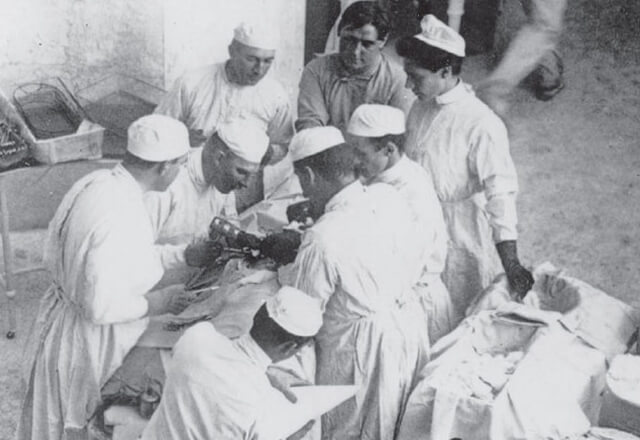Innovations in Surgery
 Sterile surgical procedures were innovated at Johns Hopkins
Sterile surgical procedures were innovated at Johns HopkinsHistory of surgery at Hopkins
At Johns Hopkins, thinking beyond conventional wisdom is the conventional wisdom. It's an outlook that has been ingrained from the beginning, when Johns Hopkins' first surgeon-in-chief, William Halsted, M.D., laid the foundation for surgery in the United States as we know it.
Dr. Halsted was dedicated to skill and technique and made many revolutionary contributions to the field of surgery, including pioneering the first lifesaving surgical treatment for breast cancer and developing new operations for intestinal and stomach diseases, gallstone removal, hernia repair and disorders of the thyroid gland.
Following in Dr. Halsted's footsteps, Hopkins surgeons:
- Launched the specialty of neurosurgery
- Proved that operating on the heart was even possible
- Became the first to separate twins joined at the head
- Implanted the first defibrillator in a human heart
Tradition continues today
In more recent years, Johns Hopkins surgeons have continued the institution's long tradition of surgical advancements. A few examples:
- Performed the first laparoscopic kidney removal and other unique procedures. Read "Hopkins Transplant Surgeons Remove Healthy Kidney Through Donor's Vagina."
- Perfected the Whipple procedure, the primary surgical treatment for pancreatic cancer, one of the deadlists cancers. Learn more about Whipple surgery.
- Developed the "nerve-sparing radical prostatectomy" which removes the cancerous prostate in men while sparing the nerves that control continence and sexual function.
